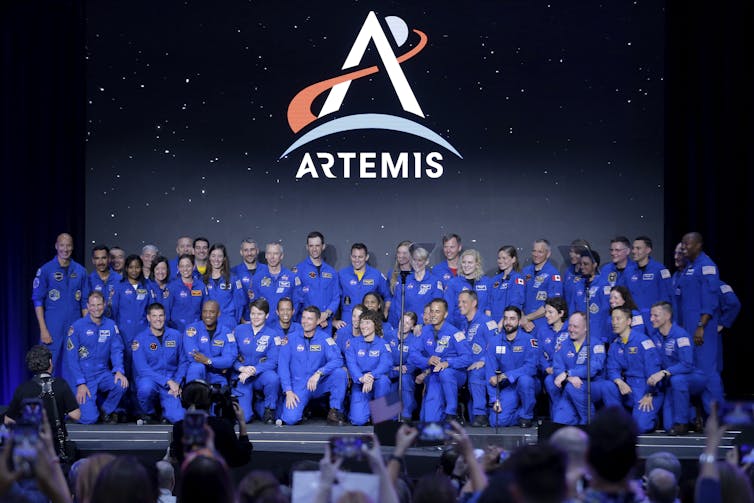
NASA has set its sights on the Moon, aiming to send astronauts back to the lunar surface by 2026 and establish a long-term presence there by the 2030s. But the Moon isn’t exactly a habitable place for people.
Cosmic rays from distant stars and galaxies and solar energetic particles from the Sun bombard the surface, and exposure to these particles can pose a risk to human health.
Both galactic cosmic rays and solar energetic particles, are high-energy particles that travel close to the speed of light.
While galactic cosmic radiation trickles toward the Moon in a relatively steady stream, energetic particles can come from the Sun in big bursts. These particles can penetrate human flesh and increase the risk of cancer.
Earth has a magnetic field that provides a shield against high-energy particles from space. But the Moon doesn’t have a magnetic field, leaving its surface vulnerable to bombardment by these particles.
During a large solar energetic particle event, the radiation dosage an astronaut receives inside a space suit could exceed 1,000 times the dosage someone on Earth receives. That would exceed an astronaut’s recommended lifetime limit by 10 times.
NASA’s Artemis program, which began in 2017, intends to reestablish a human presence on the Moon for the first time since 1972. My colleagues and I at the University of Michigan’s CLEAR center, the Center for All-Clear SEP Forecast, are working on predicting these particle ejections from the Sun. Forecasting these events may help protect future Artemis crew members.

An 11-year solar cycle
The Moon is facing dangerous levels of radiation in 2024, since the Sun is approaching the maximum point in its 11-year solar cycle. This cycle is driven by the Sun’s magnetic field, whose total strength changes dramatically every 11 years. When the Sun approaches its maximum activity, as many as 20 large solar energetic particle events can happen each year.
Both solar flares, which are sudden eruptions of electromagnetic radiation from the Sun, and coronal mass ejections, which are expulsions of a large amount of matter and magnetic fields from the Sun, can produce energetic particles.
The Sun is expected to reach its solar maximum in 2026, the target launch time for the Artemis III mission, which will land an astronaut crew on the Moon’s surface.
While researchers can follow the Sun’s cycle and predict trends, it’s difficult to guess when exactly each solar energetic particle event will occur, and how intense each event will be. Future astronauts on the Moon will need a warning system that predicts these events more precisely before they happen.
Forecasting solar events
In 2023, NASA funded a five-year space weather center of excellence called CLEAR, which aims to forecast the probability and intensity of solar energetic particle events.
Right now, forecasters at the National Oceanic and Atmospheric Administration Space Weather Prediction Center, the center that tracks solar events, can’t issue a warning for an incoming solar energetic particle event until they actually detect a solar flare or a coronal mass ejection. They detect these by looking at the Sun’s atmosphere and measuring X-rays that flow from the Sun.
Once a forecaster detects a solar flare or a coronal mass ejection, the high-energy particles usually arrive to Earth in less than an hour. But astronauts on the Moon’s surface would need more time than that to seek shelter. My team at CLEAR wants to predict solar flares and coronal mass ejections before they happen.

While scientists don’t totally understand what causes these solar events, they know that the Sun’s magnetic field is one of the key drivers. Specifically, they’re studying the strength and complexity of the magnetic field in certain regions on the Sun’s surface.
At the CLEAR center, we will monitor the Sun’s magnetic field using measurements from both ground-based and space-based telescopes and build machine learning models that predict solar events – hopefully more than 24 hours before they happen.
With the forecast framework developed at CLEAR, we also hope to predict when the particle flux falls back to a safe level. That way, we’ll be able to tell the astronauts when it’s safe to leave their shelter and continue their work on the lunar surface.![]()
Lulu Zhao, Assistant Research Scientist in Climate and Space Sciences and Engineering, University of Michigan
This article is republished from The Conversation under a Creative Commons license. Read the original article.

 How to resolve AdBlock issue?
How to resolve AdBlock issue? 
















